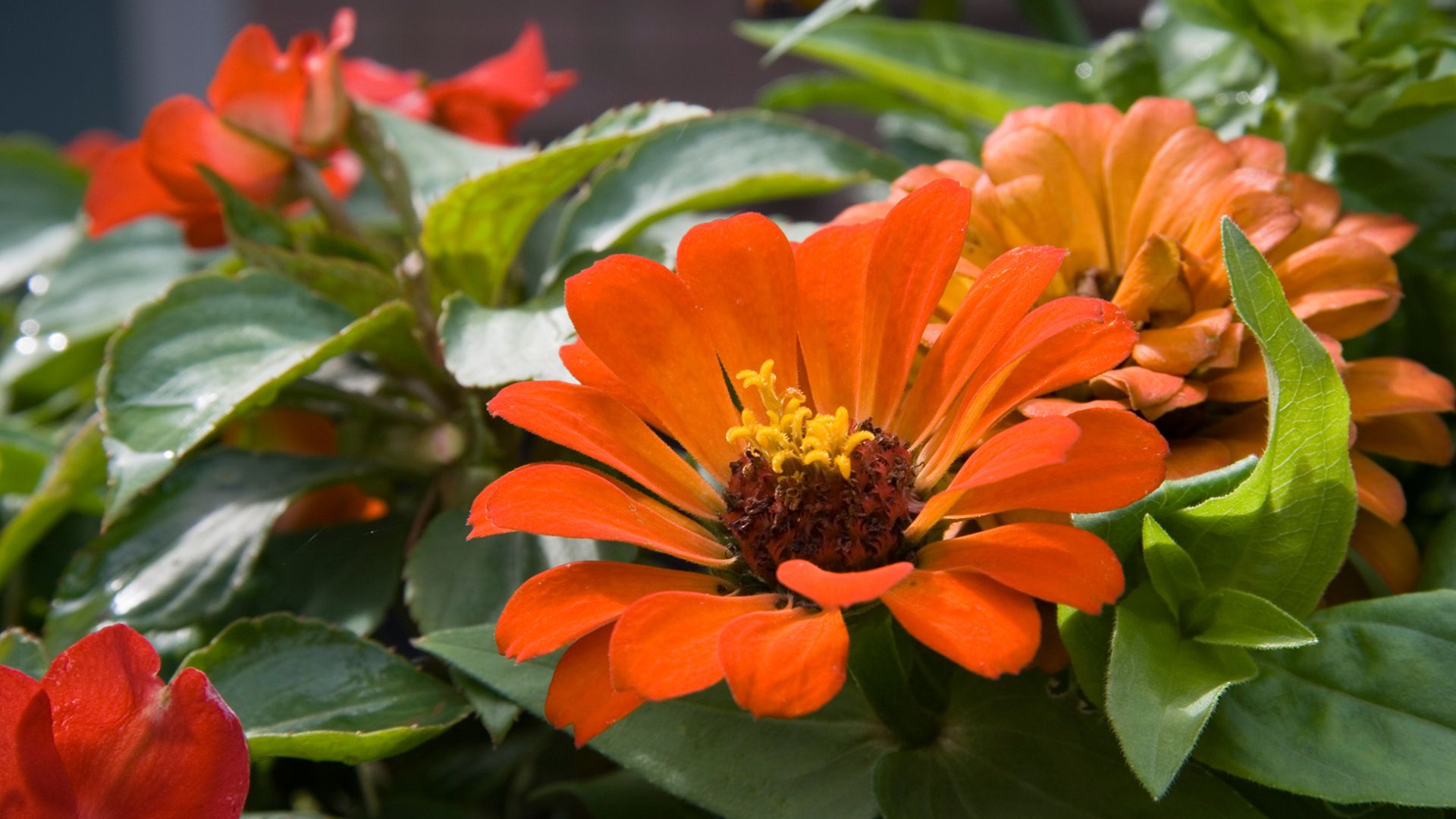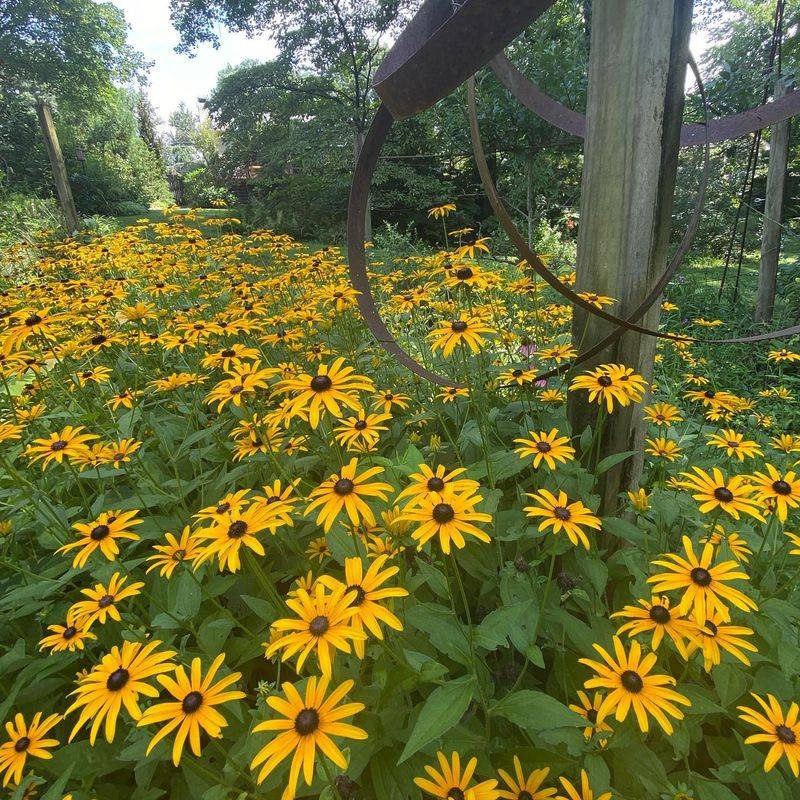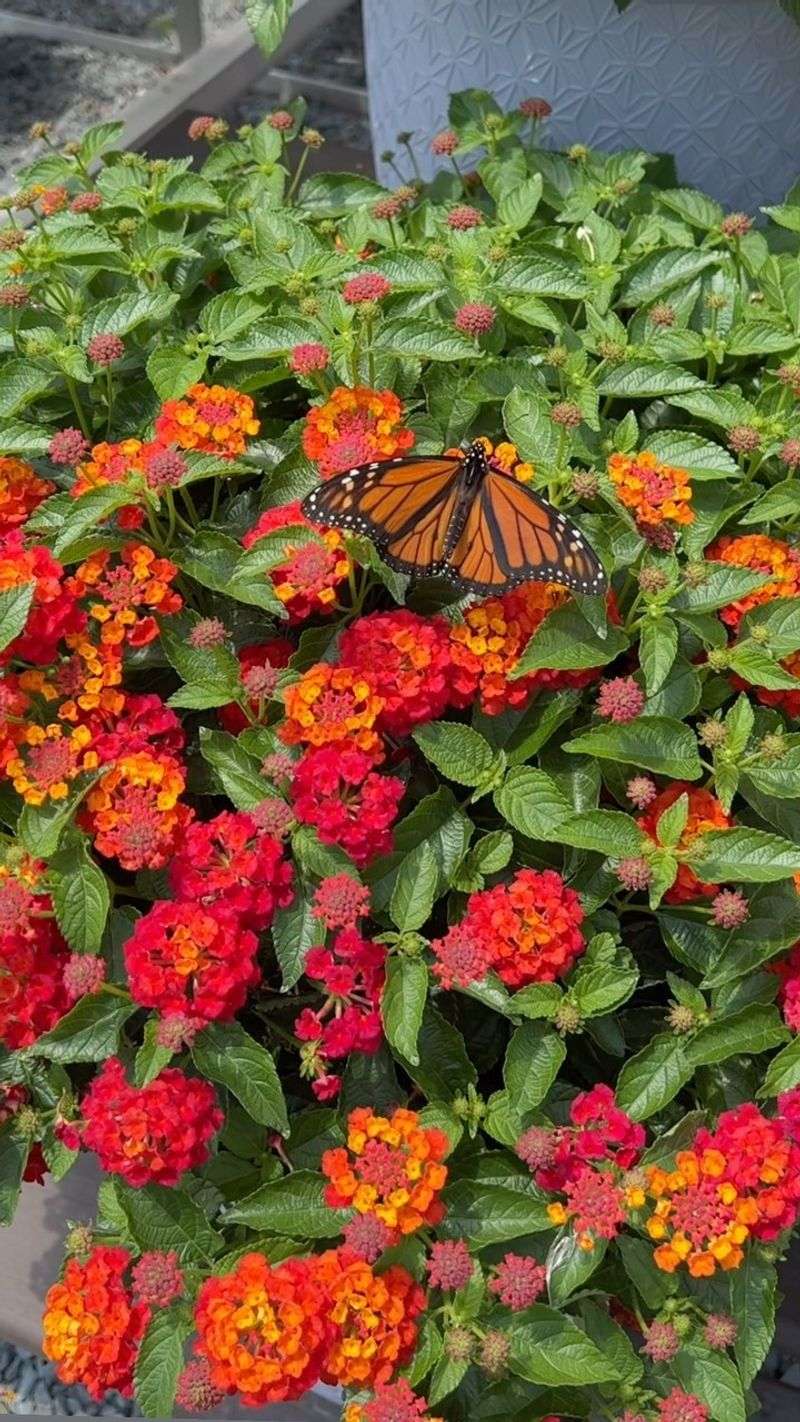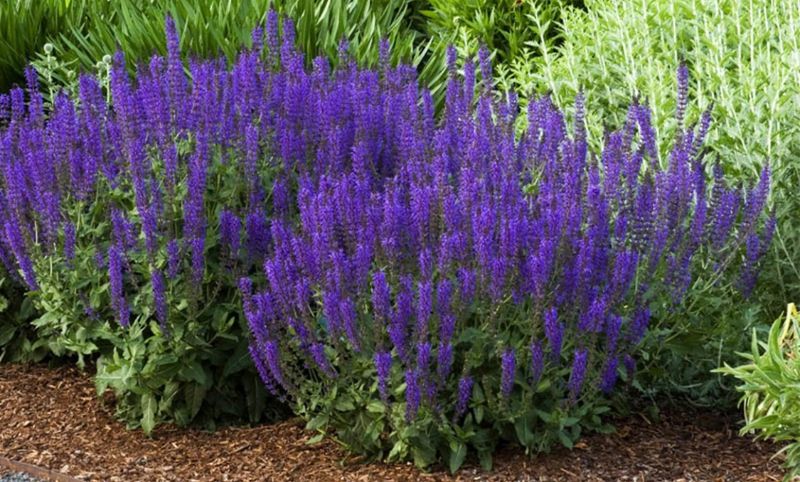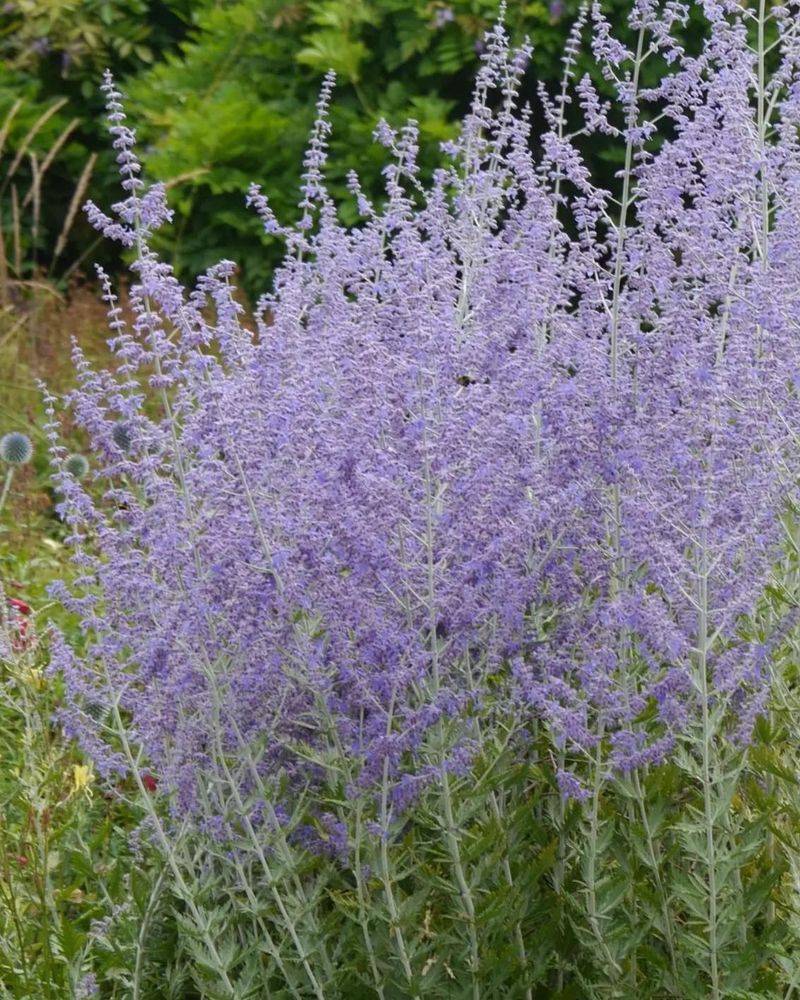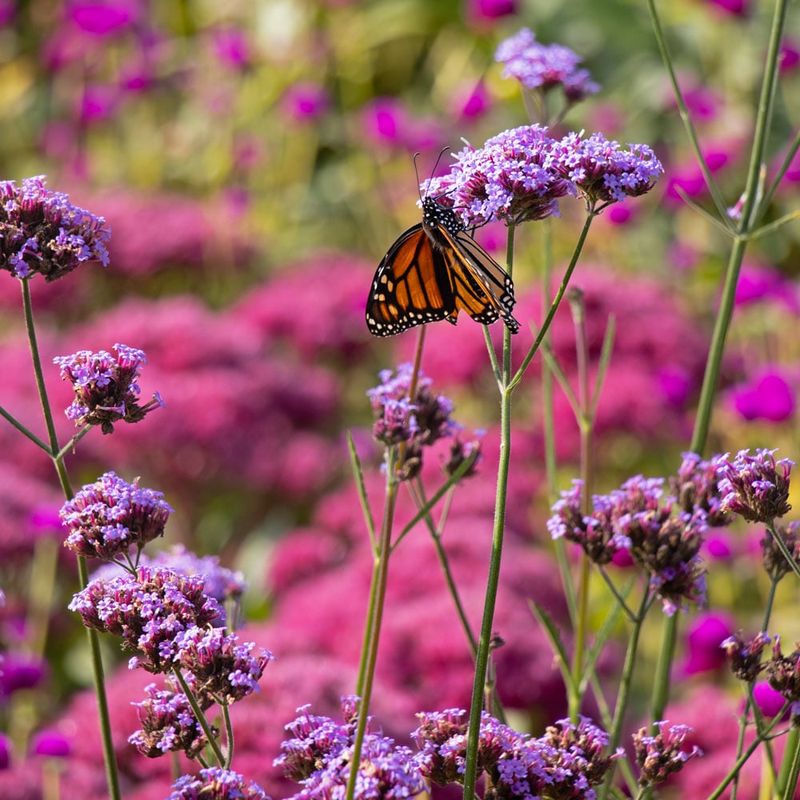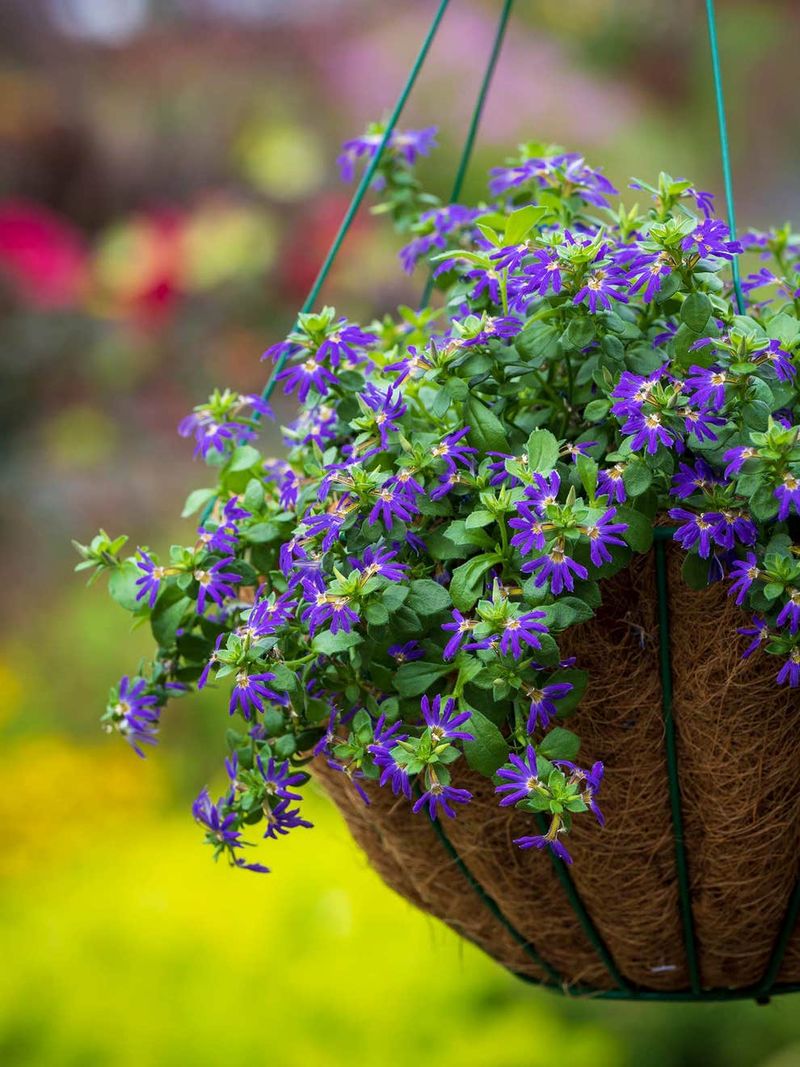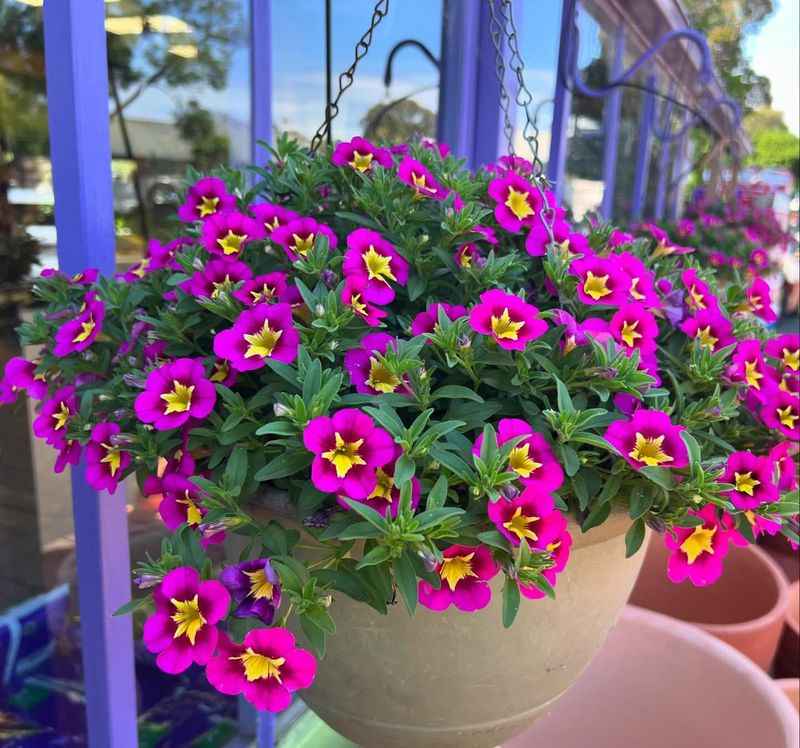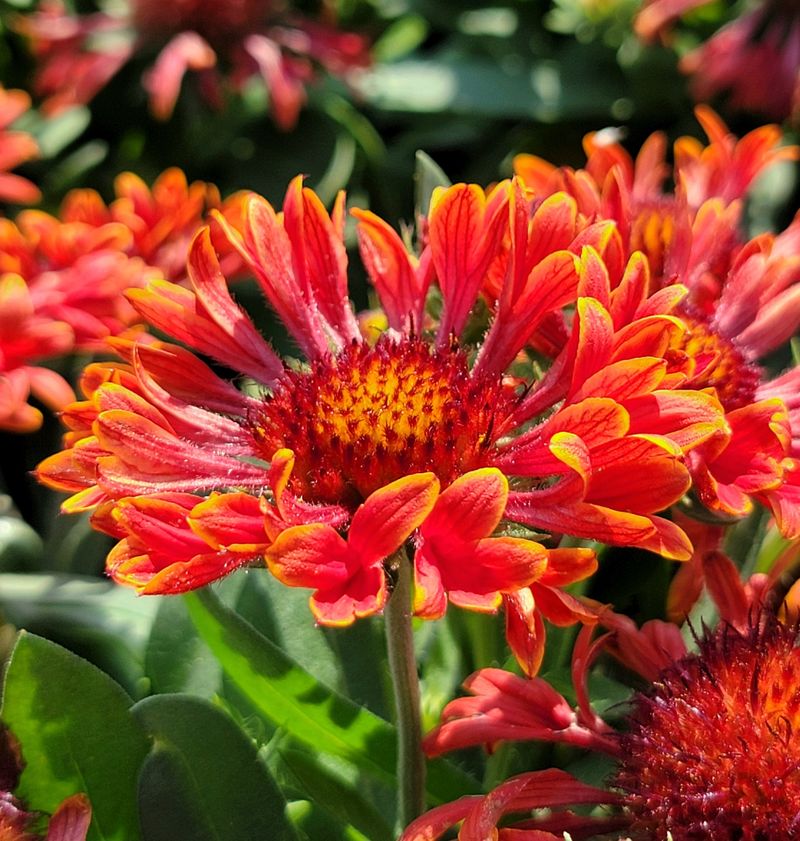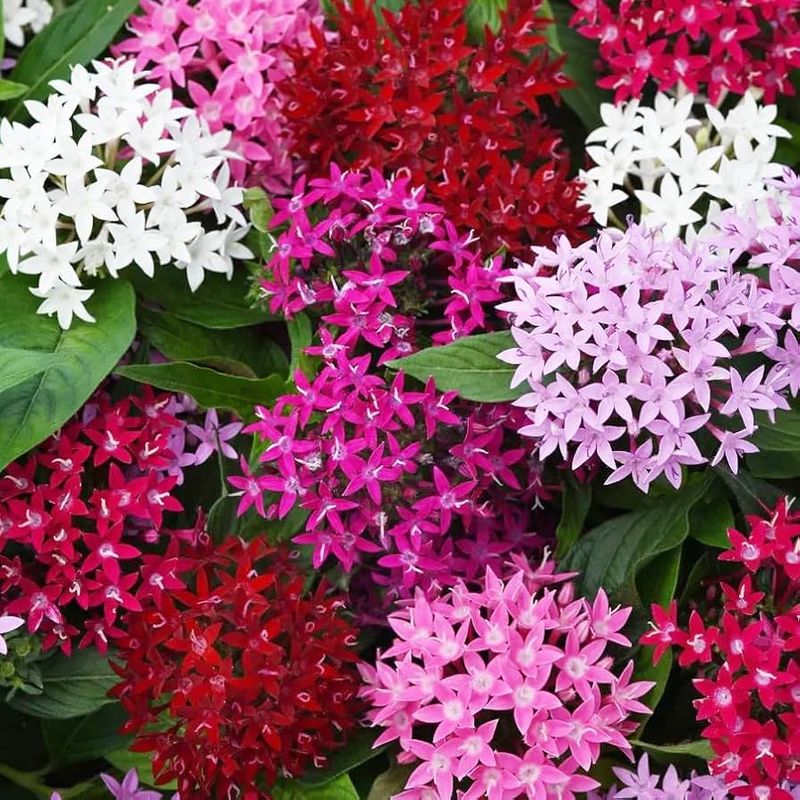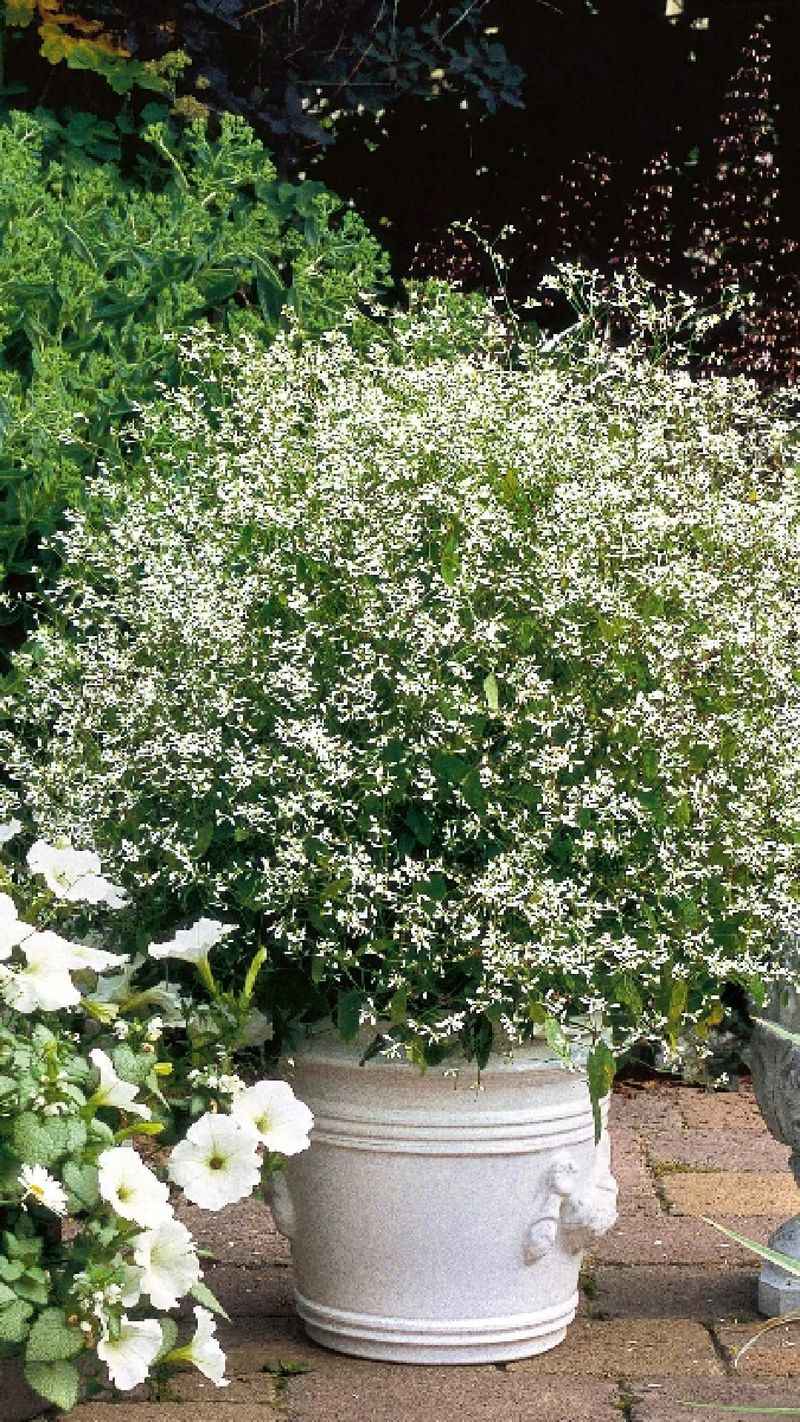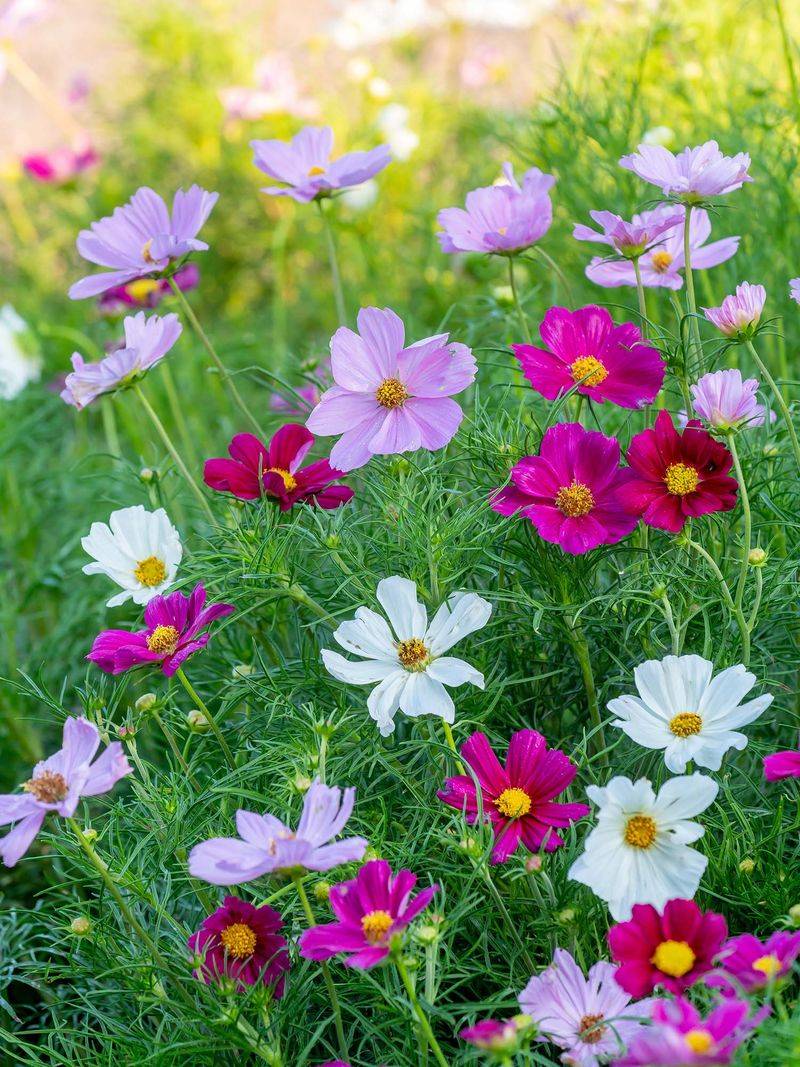Summer gardens are all about plants that can handle the heat and still keep going. You want your garden to stay bright and lively, even when the weather gets hotter.
Flowers that bloom from summer through fall are the real winners—they give you more color with less effort. No more waiting around for blooms to come and go!
These hardy plants will keep your garden looking fresh and full of life for months, so you can enjoy the beauty all season long without the extra work.
1. Black-Eyed Susan
My backyard meadow area relies on these sunny favorites for months of carefree color. Black-eyed Susans start their show in early summer and keep going strong when other flowers have given up.
The gold petals surrounding that distinctive dark center seem to handle heat waves better than most plants in my experience. I’ve noticed they actually look better as summer progresses, unlike many perennials that get leggy or tired.
A quick deadheading every week or so encourages them to produce even more blooms, though they’ll flower reliably even if you forget. They’ve survived drought in my garden when I was traveling for three weeks.
2. Lantana
The summer heat that makes me wilt seems to energize lantana plants in my front border. Their clusters of tiny flowers in sunset colors attract so many butterflies that I’ve started calling this section my ‘butterfly diner’.
I’ve tried many summer bloomers over the years, but lantana consistently outperforms them during August’s brutal heat. The flowers keep coming without pause, and the plants actually look fuller as summer progresses.
Last year, my ‘Bandana Red’ lantana was still flowering when Halloween decorations went up in the neighborhood. They need almost no care once established—just full sun and occasional water during extended dry spells.
3. Coreopsis
For a plant that weighs practically nothing, coreopsis carries its weight in the garden all summer long. The airy stems covered in daisy-like blooms sway gently in summer breezes, creating movement that makes my garden feel alive.
After trying several varieties, ‘Moonbeam’ has proven most reliable in my mixed borders, producing pale yellow flowers from June until the first frost. What surprises me most is how it bounces back after heavy rain that flattens other perennials.
A quick trim in midsummer—just snipping off about a third of the plant—keeps it blooming nonstop instead of taking a break. The threadleaf varieties seem to flower longer than the ones with wider leaves in my experience.
4. Salvia ‘May Night’
The deep purple spikes in my sunny border have become the backbone of my summer garden. Salvia ‘May Night’ starts flowering in late spring, but unlike other early bloomers, it doesn’t quit when summer heats up.
What I appreciate most is how it keeps its compact shape all season without flopping over like some perennials. After the first heavy flush of blooms, I give it a quick haircut, cutting just below the spent flower stalks.
This five-minute task rewards me with a second and third round of those rich purple spikes that contrast beautifully with yellows and oranges nearby. The deer and rabbits that plague my other plants completely ignore this one, which alone makes it worth growing.
5. Zinnia
From a packet of seeds that cost less than a coffee, I get months of cut flowers that brighten both my garden and kitchen table. Zinnias start blooming about two months after planting and don’t stop until frost.
The more I cut them for bouquets, the more flowers they produce—a gardening win-win I’ve come to appreciate. My ‘Benary’s Giant’ varieties stand tall through summer storms that knock over other flowers, something I discovered after a particularly wet July.
Their bright colors seem to intensify rather than fade during August’s heat when many flowers look washed out. For continuous bloom, I plant a second small batch in early July to take over when the first plants start to slow down in late summer.
6. Profusion Zinnias
After years of trying different flowers for my hot, dry front yard, these smaller zinnias have proven themselves the marathon runners of my garden. Profusion Zinnias form neat mounds that stay covered in blooms without the deadheading that regular zinnias demand.
My orange and cherry varieties survived a three-week drought last August when I could only water once a week. While neighboring plants looked stressed, these kept flowering as if nothing unusual was happening.
The compact size makes them perfect for the front of borders where taller plants would flop forward and block the walkway. I’ve found they perform even better in their second month than when they first start blooming, unlike many summer annuals that peak early then decline.
7. Russian Sage
The silvery-blue cloud that forms along my driveway garden gets more compliments than any other plant I grow. Russian sage starts its display in early summer and looks even better as the season progresses.
Unlike many perennials that need frequent division, this one has maintained its beautiful form for five years without any special attention from me. The cloud of tiny lavender-blue flowers attracts bees and butterflies but seems to repel the deer that sample everything else.
During last summer’s heat wave, it was one of the few plants that didn’t wilt or show stress. The slight movement of its airy branches in the breeze adds a dynamic quality to my otherwise static landscape, especially beautiful when backlit by afternoon sun.
8. Verbena Bonariensis
The tall, slender stems topped with small purple flower clusters create a see-through effect that adds depth to my garden beds. Verbena bonariensis weaves through neighboring plants, filling gaps without overwhelming anything around it.
My original three plants have gently self-seeded over the years, popping up exactly where something interesting is needed. The height—nearly four feet in my garden—provides vertical interest without requiring staking or support like other tall flowers.
Even after a heavy thunderstorm last July flattened my coneflowers, these wiry stems remained upright. The butterflies that gather on the flower heads add movement and life to the garden from July through October, with peak butterfly activity occurring in September when many other flowers have finished.
9. Scaevola
My hanging baskets on the patio used to look tired by August until I discovered this fan-flowered beauty. Scaevola’s unique half-circle blooms handle heat and humidity better than any other trailing plant I’ve tried.
During last summer’s record temperatures, my petunias gave up completely while the scaevola continued flowering without missing a beat. The cascading habit has grown nearly three feet long in my larger containers, creating a waterfall effect of blue-purple flowers.
Unlike many flowering annuals, it doesn’t need deadheading to keep producing blooms—a real time-saver during busy summer months. I’ve found it performs even better with slightly dry conditions than with constant moisture, making it perfect for those weeks when vacation takes me away from my watering routine.
10. Angelonia
The first summer I planted these in my front flower beds, a neighbor stopped to ask what those “snapdragon-like flowers that never quit” were. Angelonia has been my reliable summer backbone ever since, flowering continuously without the breaks that most perennials need.
My purple varieties seem to intensify in color during the hottest weeks of summer rather than fading like many flowers do. The upright growth habit fills the middle layer of my garden design without spreading too aggressively or needing staking.
A light fertilizer application in mid-July keeps them going strong when other annuals start to decline. They’ve survived both drought and downpours with equal resilience, making them the least fussy plants in my summer garden—perfect for weeks when gardening time is limited.
11. Calibrachoa
My window boxes stayed colorful through an entire summer heat wave thanks to these miniature petunia lookalikes. Calibrachoa flowers so prolifically that the foliage is often completely hidden beneath a blanket of blooms.
After trying many container plants over the years, I’ve found these bounce back from wilting better than anything else when I occasionally forget to water. The ‘Superbells Tropical Sunrise’ variety in my east-facing planters has been flowering nonstop since May, with colors that seem to intensify rather than fade as summer progresses.
Unlike their petunia cousins, they shed their spent blooms naturally, eliminating the sticky deadheading task that makes my fingers smell like tobacco. A monthly dose of fertilizer keeps them flowering well into October when most summer annuals have long since given up.
12. Gaillardia
The corner of my garden that bakes in afternoon sun would be empty without these tough native flowers. Gaillardia’s red and yellow blooms remind me of little sunsets scattered throughout the border from June until frost.
When a three-week drought left my soil cracked and dry last summer, these kept flowering while more pampered perennials went dormant. I’ve noticed the plants actually look better after a year or two in the garden, unlike many perennials that peak in their first season.
Passing finches visit daily to snack on the seeds, adding wildlife interest to the late summer garden. A quick shearing in midsummer—just cutting back about a third of the plant—stimulates a fresh flush of blooms that carries the show into fall when most summer flowers are finished.
13. Pentas
The hummingbirds led me to discover these star-shaped flower clusters that bloom continuously through summer’s worst heat. Pentas have outperformed nearly everything else in the challenging west side of my house where afternoon sun bakes the soil.
My red varieties attract hummingbirds all day long, while the pink and white ones seem to be butterfly magnets. Unlike many flowering plants that take breaks between bloom cycles, these produce new flower clusters as fast as the old ones fade.
During last summer’s week of 95-degree days, they continued flowering when even my zinnias looked stressed. The upright habit makes them perfect partners for trailing plants in containers, creating those magazine-worthy combinations that look good from planting time until frost cuts them down.
14. Celosia
The flame-like flower spikes add a tropical feel to my garden beds without requiring tropical care. Celosia starts blooming when summer heat intensifies and keeps producing those distinctive plumes until the first frost cuts them down.
After watching many summer annuals decline by August, I’ve been impressed by how these actually look better as the season progresses. The ‘Fresh Look Red’ variety in my south border has maintained its vivid color through rainstorms and hot spells alike.
What started as 6-inch transplants in late May grew to nearly two feet tall by Labor Day, filling in gaps left by spring-flowering perennials. I’ve found they need less water than most annuals once established, making them perfect for those parts of the garden where the hose doesn’t quite reach comfortably.
15. Euphorbia ‘Diamond Frost’
The cloud of tiny white flowers creates a magical effect in my garden from the moment it’s planted until frost finally ends the show. Euphorbia ‘Diamond Frost’ fills gaps between bolder flowers with its airy texture that seems to make everything around it look better.
During a particularly humid August when powdery mildew affected many plants, this one remained pristine without any special care. The delicate appearance belies its tough nature—it sailed through a forgotten week without water during my vacation with minimal stress.
Unlike many white flowers that turn brown and unsightly as blooms age, these tiny flowers simply disappear as new ones constantly replace them. I’ve found it pairs beautifully with anything from bold dahlias to delicate verbenas, acting as a living bouquet filler in the garden just as baby’s breath does in floral arrangements.
16. Cosmos
From a $2 seed packet scattered in May, my side garden transforms into a cottage-style paradise that lasts until October. Cosmos start flowering about two months after sowing and keep producing those daisy-like blooms through summer’s heat and into fall.
The ferny foliage stays fresh-looking even during dry spells when other plants in my garden look tired. I’ve found the Sonata series reaches just the right height—about 20 inches in my garden—to create a middle layer without flopping over or requiring staking.
Goldfinches visit daily in late summer to balance acrobatically on the spent flower heads, adding wildlife interest. For continuous bloom, I’ve learned to resist the urge to deadhead everything, leaving some flowers to form seeds while cutting others for indoor bouquets that last nearly a week in water.
17. Portulaca
The narrow strip along my driveway turns into a colorful carpet each summer thanks to these heat-loving succulents. Portulaca’s rose-like blooms open with the sun, creating a daily color show that continues long after other plants have succumbed to summer stress.
During last July’s record temperatures, they seemed to flower even more prolifically while my other annuals struggled to survive. The low-growing habit makes them perfect for edges and rock gardens where taller plants would look out of place.
I’ve noticed they actually perform better with some neglect—the colors intensify with less water and more sun. My original plants have gently self-seeded over the years, popping up in sidewalk cracks and other challenging spots where nothing else would grow, creating delightful surprises throughout the garden.

